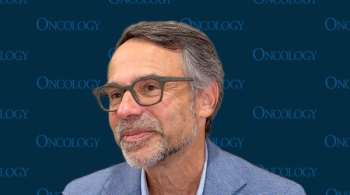
Oncology NEWS International
- Oncology NEWS International Vol 8 No 8
- Volume 8
- Issue 8
Doxil Approved for Refractory Metastatic Ovarian Cancer
ROCKVILLE, Md-Doxil (doxorubicin HCl liposome injection, ALZA Corporation) has won accelerated FDA approval of its supplemental New Drug Application for the treatment of metastatic ovarian cancer refractory to both paclitaxel (Taxol)- and platinum-based chemotherapy regimens. Accelerated approval requires the company to conduct additional research to demonstrate that the drug is associated with clinical benefit. Doxil, a liposomal formulation of doxorubicin, is currently approved for use in AIDS-related Kaposi’s sarcoma.
ROCKVILLE, MdDoxil (doxorubicin HCl liposome injection, ALZA Corporation) has won accelerated FDA approval of its supplemental New Drug Application for the treatment of metastatic ovarian cancer refractory to both paclitaxel (Taxol)- and platinum-based chemotherapy regimens. Accelerated approval requires the company to conduct additional research to demonstrate that the drug is associated with clinical benefit. Doxil, a liposomal formulation of doxorubicin, is currently approved for use in AIDS-related Kaposis sarcoma.
In its presentation to the Oncology Drugs Advisory Committee (ODAC) only 3 weeks before approval was granted, ALZA provided data from four studies in support of its applicationthree phase II trials, two completed and one ongoing, and an ongoing phase III trial.
According to the FDA, study 30-22 (involving 27 eligible patients with refractory ovarian cancer, treated at two US sites) showed a response rate of 22.2%. Study 30-47 (82 eligible patients treated at 18 US sites) produced a response rate of 17.1%. Study 30-47E, still in progress with 52 patients at 14 centers in Europe, found no responses among 36 patients.
Finally, an interim analysis of study 30-49, comparing Doxil with topotecan (Hycamtin) in 237 patients at 90 sites in the United States and Europe, showed a Doxil response rate of 13.6% (6 of 44 patients) vs 8.1% (3 of 37) for topotecan.
The combined Doxil response rate for the four studies was 13.8% (26 of 189 patients), according to the FDA. This was slightly lower than the 14.4% rate claimed by the company. Duration of response across the trials was 39.4 weeks, and time to progression was 15.9 weeks, according to ALZA.
At the ODAC meeting, several members expressed puzzlement about the zero response rate in study 30-47E, the ongoing phase II European trial. The company said several factors indicate that patients in that trial may have been sicker, which could account for the nonresponse.
The sum total of major disease at baseline was somewhat larger, and patients spent a shorter amount of time on trial, said Edward Schnipper, MD, ALZAs vice president for Clinical Research. It appears possible that patients on this trial entered at a later state of their disease and were treated for shorter periods of time than were patient on the other Doxil trials.
ALZAs data presentation did not satisfy patient representative Martha Solonche of New York City. From a patients perspective, were looking at survival, and I dont think we have enough data at the moment to see this as a drug that is going to advance treatment in a great way, Ms. Solonche said.
Two dosage schedules were used in the trials presented by ALZA: every 3 weeks in trial 30-22 and every 4 weeks in the other three. Due to higher toxicity with the every-3-week regimen, ALZA requested that the FDA consider only the every-4-week regimen.
Generally Well Tolerated
In its safety analysis, FDA staff limited its review to study 30-47, which was the one completed study that used the every-4-week schedule. It found the following: hand-foot syndrome, 42%/20% severe; asthenia, 42%/9%; leukopenia, 39%/7%; anemia, 39%/14%; nausea, 38%/7%; neutropenia, 37%/16%; stomatitis, 35%/9%.
We would submit that Doxil is generally well tolerated, Ken Cunningham, MD, vice president for European Clinical Research, said in summing up ALZAs safety presentation. Hand-foot syndrome is the most common adverse event, and it is manageable, as evidenced by the relatively low number of patients who actually withdrew as a result.
Stacy R. Nerenstone, MD, of the Gray Cancer Center, Hartford, commended the sponsor for looking at this patient population, which notoriously has been clinically underrepresented in clinical trials in terms of drug development. I think, for this carefully defined population, the 13% response rate is meaningful.
Articles in this issue
over 16 years ago
False positives frequent in CT lung cancer screening trialover 26 years ago
Stereotactic Core Biopsy Establishes Many Prognostic Factorsover 26 years ago
Breast Cancer Prevention With Tamoxifen Appears Cost-Effectiveover 26 years ago
NCI Discovers Gene Variations From Existing Databasesover 26 years ago
CPDR Unveils First Center Solely for Prostate Cancer Researchover 26 years ago
Going Beyond CHOP in Advanced Large-Cell Lymphomaover 26 years ago
Memorial Sloan-Kettering Opens Rockefeller Outpatient Pavilionover 26 years ago
Ernst Wynder, Pioneer in Preventive Medicineover 26 years ago
AHCPR Plans Health Care Market, Managed Care Research Centersover 26 years ago
NSAIDs May Protect Against Common GI CancersNewsletter
Stay up to date on recent advances in the multidisciplinary approach to cancer.
















































































